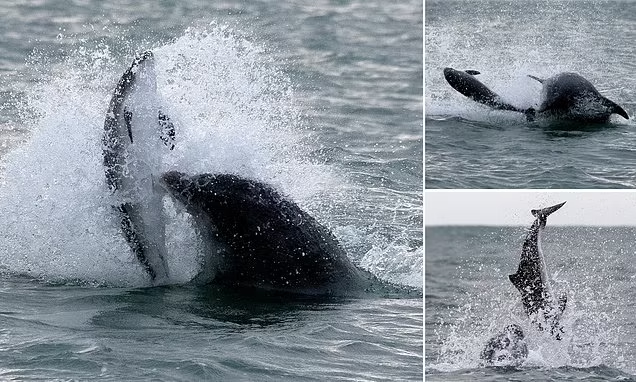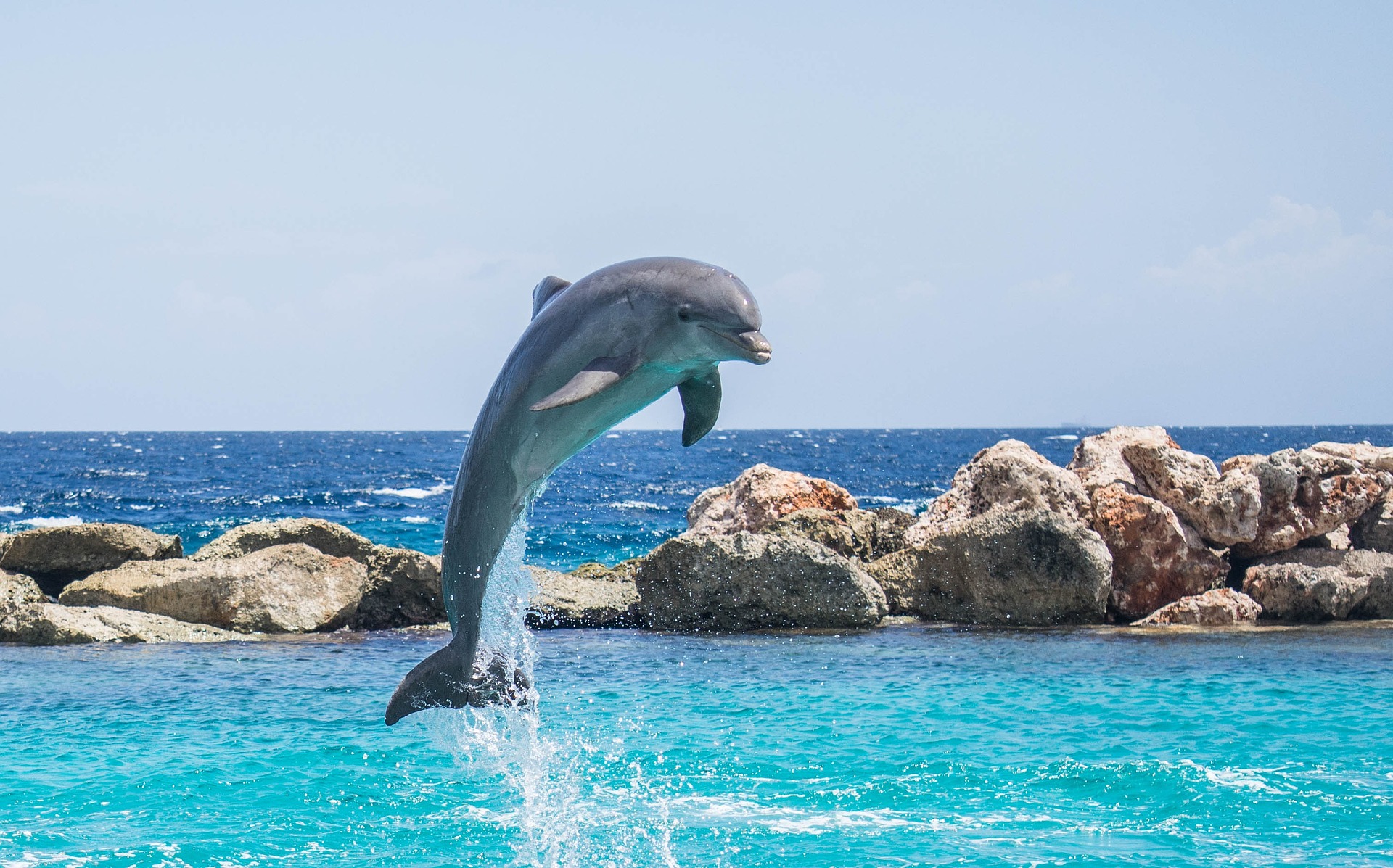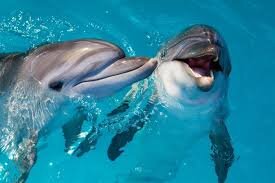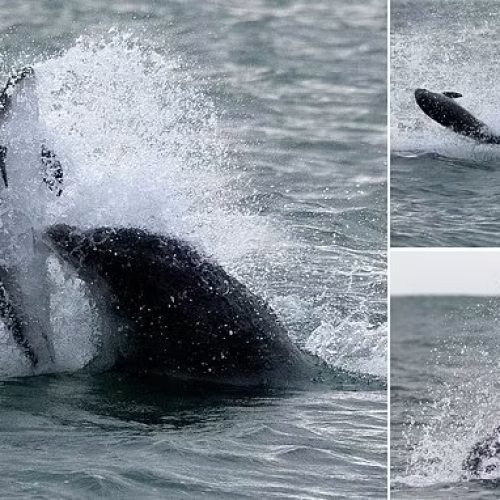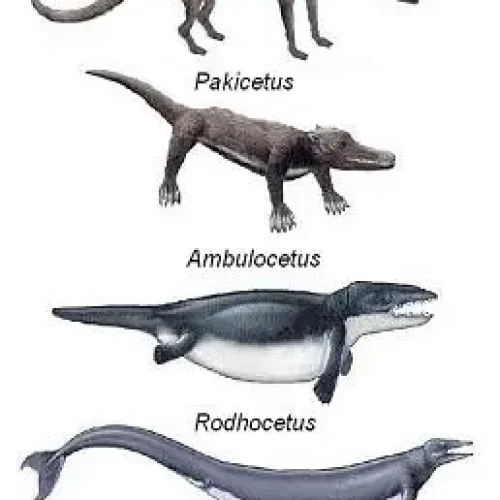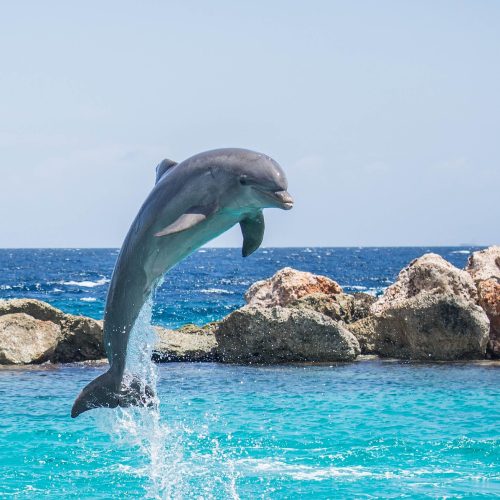Dolphins are often considered one of the most intelligent creatures on our planet, with remarkable cognitive abilities that never cease to amaze scientists.
With complex brains and a brain-to-body size ratio second only to that of humans, dolphins demonstrate a self-awareness unique in the animal kingdom, as demonstrated by mirror tests.
But this is just the tip of the iceberg: let’s dive together into the fascinating world of dolphin intelligence.
In this article
THE REMARKABLE COGNITIVE ABILITIES OF DOLPHINS
Dolphins are widely regarded as one of the most intelligent animals on the planet, and for good reason. These fascinating marine mammals possess large, complex brains that are second only to humans in terms of brain-to-body size ratio.
In fact, the encephalization quotient (EQ) of dolphins, which measures relative brain size, is around 4 to 5, surpassed only by humans at 7.4. This substantial brain power endows dolphins with remarkable cognitive capabilities.
One striking demonstration of dolphins’ intelligence is their ability to recognize themselves in a mirror, displaying a level of self-awareness rare in the animal kingdom.
In a famous experiment conducted by researchers, dolphins were marked with temporary ink and consistently investigated the marking in their reflection, strongly suggesting they possess a sense of self.
This complex self-recognition has only been documented in a handful of species, including great apes, elephants, and certain birds.
Dolphins also excel in problem-solving tasks, exhibiting flexibility and innovation. Numerous studies have showcased their ability to understand complex commands, learn novel behaviors, and creatively devise solutions to challenges.
For instance, dolphins have been observed using tools, such as sponges, to protect their sensitive rostrums while foraging on the seabed.
This culturally transmitted behavior, passed down through generations in certain dolphin populations, highlights their capacity for social learning and adaptability.
YOU MAY ALSO LIKE – Pig or the dolphin: Who’s the king of intelligence?
DOLPHINS’ IMPRESSIVE COMMUNICATION SKILLS
In addition to their cognitive prowess, dolphins are renowned for their sophisticated communication abilities.
These highly social creatures utilize a diverse array of clicks, whistles, and other vocalizations to convey information and maintain social bonds. Remarkably, each individual dolphin develops a unique signature whistle that serves as a personal identifier, similar to a name.
Research has revealed that dolphins use these signature whistles to address and call out to specific individuals within their pod. When a dolphin hears its own signature whistle, it often responds, suggesting a level of self-recognition and awareness.
Furthermore, dolphins have been observed mimicking the signature whistles of others, potentially indicating a form of referential communication.
The complexity of dolphin communication extends beyond signature whistles.
Studies have shown that dolphins possess an extensive “vocabulary” of distinct vocalizations, which they combine and recombine in ways reminiscent of human language.
While the exact nature and extent of their linguistic capabilities remain a subject of ongoing research, there is compelling evidence to suggest that dolphins engage in sophisticated, language-like communication.
• Dolphins demonstrate syntax, using specific sequences of vocalizations
• They appear to have “dialects” that vary between different populations
• Dolphins show evidence of cultural transmission of communication patterThe intricate communication system of dolphins allows them to coordinate hunting strategies, maintain social hierarchies, and convey emotional states.
Decoding the nuances of dolphin communication continues to be a fascinating area of study, offering insights into the complex social and cognitive lives of these remarkable marine mammals.
YOU MAY ALSO LIKE –Intelligence, talent and charisma: here are the 5 most famous dolphins in the animal world
DOLPHINS’ INTELLIGENCE: STRONG SOCIAL BONDS AND CULTURAL TRADITIONS
Dolphins are characterized by strong social bonds and distinct cultural traditions, often leading researchers to question ‘are dolphins happy‘ in their natural environments.
They live in tightly knit social groups, demonstrating cooperation, empathy, and even mourning in response to the loss of a fellow member.
Observations of ‘happy dolphins‘ engaging in playful behaviors and maintaining close-knit family units suggest a high level of emotional well-being.
A recent study published in Proceedings of the Royal Society B highlighted mourning behaviors in bottlenose dolphins, such as carrying the body of a deceased calf for several days, indicating deep emotional connections within these marine communities
YOU MAY ALSO LIKE – What is the symbol of the dolphin?
PROBLEM-SOLVING ABILITIES OF DOLPHINS
Dolphins’ intelligence is also evident in their impressive learning abilities. They can learn complex tricks and tasks, displaying creativity in problem-solving. Dolphins even use tools innovatively.
A study conducted at the Dolphin Research Center in Florida showed that dolphins could quickly learn to exchange trash for rewards in the form of fish, demonstrating remarkable autonomy and ingenuity.
Dolphins’ intellectual feats extend beyond tool use. They can understand complex gestures and symbols, memorize and execute long series of instructions. Researchers at the Dolphin Research Center have succeeded in teaching dolphins to distinguish numbers and even perform basic mathematical operations.
In the wild, dolphins employ elaborate and coordinated hunting strategies. For instance, Florida’s bottlenose dolphins corral fish by creating curtains of sand and then take turns catching them.
These techniques require effective communication and precise synchronization among individuals.
With their sense of cooperation, knowledge transmission, abstract thinking, and problem-solving abilities, dolphins are undoubtedly among the most intelligent animals on Earth.
While their form of intelligence may differ from ours, it is no less remarkable and fascinating for researchers in animal cognition to study.

